Mahoney, John Burke
Killed in Action 1944-01-21
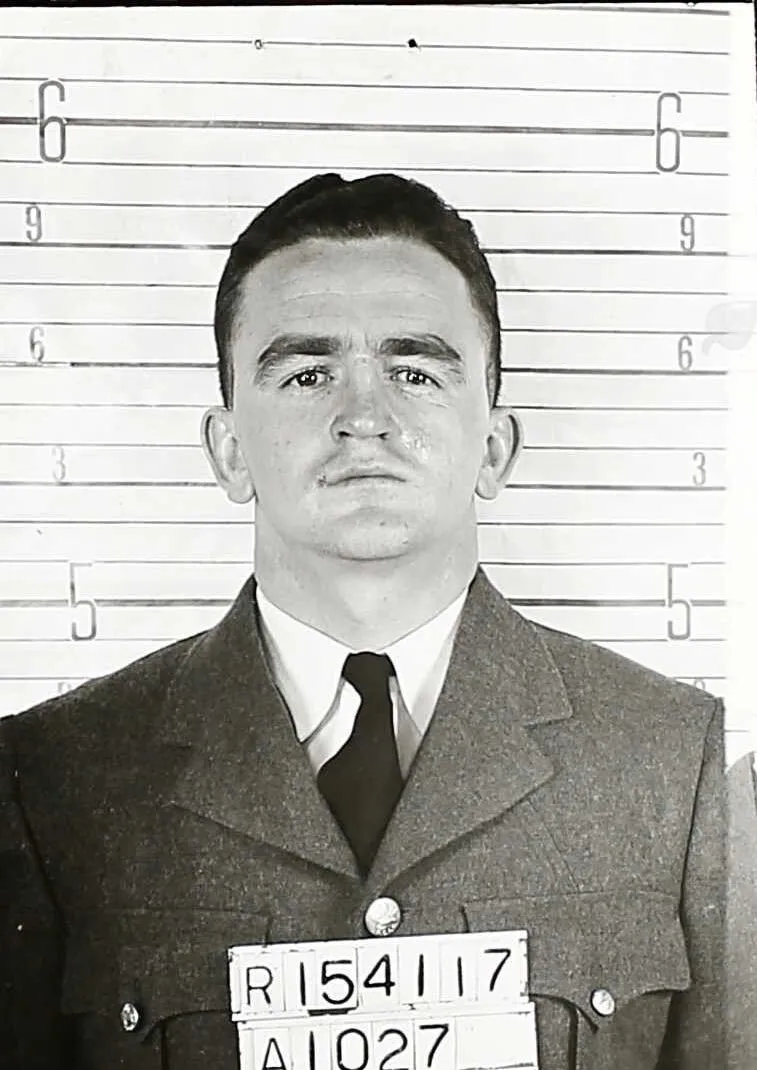

Birth Date: 1917
Born:
Son of Cornelius J. and Theresa C. Mahoney, of Lachine, Province of Quebec, Canada.
Home: Lachine, Quebec
Enlistment:
Enlistment Date: Unknown
Service
RCAF
Unit
432 (B) Sqn- Squadron
Saeviter Ad Lucem Ferociously toward the light
Base
RAF Linton-on-Ouse
Rank
Flying Officer
Position
Flying Officer
Service Numbers
J/22594
Lancaster Mk.II LL724
Bombing Magdeburg Germany 1944-January-21 to 1944-January-21
(B) Sqn (RCAF) East Moor
Battle of Berlin
648 aircraft- 42 I Lancasters, 224 Halifaxes, 3 Mosquitoes - on the first major raid to this target. The German controller again followed the progress of the bomber stream across the North Sea and many night fighters were in the stream before it crossed the German coast. The controller was very slow to identify Magdeburg as the target but this did not matter too much because most of the night fighters were able to stay in the bomber stream, a good example of the way the Tame Boar tactics were developing. 57 aircraft - 35 Halifaxes, 22 Lancasters - were lost, 8·8 per cent of the force; it is probable that three quarters of the losses were caused by German night fighters. The Halifax loss rate was 15·6 per cent!
The heavy bomber casualties were not rewarded with a successful attack. Some of the Main Force aircraft now had H2S and winds which were stronger than forecast brought some of these into the target area before the Pathfinders' Zero Hour. The crews of 27 Main Force aircraft were anxious to bomb and did so before Zero Hour. The Pathfinders blamed the fires started by this early bombing, together with some very effective German decoy markers, for their failure to concentrate the marking. No details are available from Magdeburg but it is believed that most of the bombing fell outside the city. An R.A.F. man who was in hospital at Magdeburg at the time reports only, 'bangs far away'.
source: The Bomber Command War Diaries, Martin Middlebrook and Chris Everitt
Lancaster BII aircraft LL 724 QO-N was shot down one and one half miles south-east of the aerodrome at Wesendorf, Germany whilst carrying out night operations against the synthetic oil plants at Magdeburg, Germany, shot down by night fighter pilot Oberleutnant Wolfgang Knieling of the 4/NJG 5, who was flying a Bf 110 G-4. The Lancaster crashed near Wagenhoff, Niedersachsen, Germany with the loss of the entire crew
Flying Officer LF Legace (RCAF), Flying Officer JB Mahoney (RCAF), Flying Officer DR Hunter (RCAF),Warrant Officer DA McDonald, Pilot Officer WJ Douglas (RCAF)(USA), FS WA Peterson (RCAF), and Sergeant WG Atkins (RAFVR) were all killed in action
There were two 432 Squadron Lancaster II aircraft lost on this operation. Please see Pocock, DL for information on Lancaster DS 843 QO-O
Lancaster LL724
Avro Lancaster

Canadian Warplane Heritage Museum
The Avro Lancaster is a British Second World War heavy bomber. It was designed and manufactured by Avro as a contemporary of the Handley Page Halifax, both bombers having been developed to the same specification, as well as the Short Stirling, all three aircraft being four-engined heavy bombers adopted by the Royal Air Force (RAF) during the same wartime era.
The Lancaster has its origins in the twin-engine Avro Manchester which had been developed during the late 1930s in response to the Air Ministry Specification P.13/36 for a capable medium bomber for "world-wide use". Originally developed as an evolution of the Manchester (which had proved troublesome in service and was retired in 1942), the Lancaster was designed by Roy Chadwick and powered by four Rolls-Royce Merlins and in one version, Bristol Hercules engines. It first saw service with RAF Bomber Command in 1942 and as the strategic bombing offensive over Europe gathered momentum, it was the main aircraft for the night-time bombing campaigns that followed. As increasing numbers of the type were produced, it became the principal heavy bomber used by the RAF, the Royal Canadian Air Force (RCAF) and squadrons from other Commonwealth and European countries serving within the RAF, overshadowing the Halifax and Stirling. Wikipedia
432 (B) Sqn Saeviter Ad Lucem ("Leaside")
History of the Squadron during World War II (Aircraft: Wellington X, Lancaster II, Halifax III, VII)
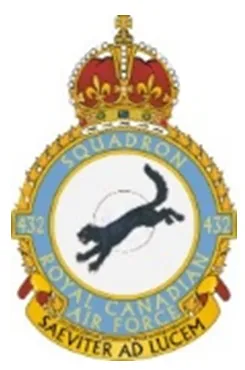
The Squadron was the twelfth RCAF bomber squadron to be formed overseas in WWII. It was formed on May 1, 1943 at Skipton-on-Swale, Yorkshire, UK as a unit of No 6 (RCAF) Group of RAF Bomber Command: indeed, it was the first bomber squadron to be formed directly into No 6 Group. Using the squadron identification letters QO it flew Vickers Wellington Mk X medium bombers until it moved to East Moor, Yorkshire on 19th September 1943, when it re-equipped with Avro Lancaster Mk II aircraft. East Moor was part of No 62 (RCAF) Base. The squadron re-equipped with Handley Page Halifax Mk III aircraft in February 1944, and with Halifax Mk VII in July of that year, and continued with them until the squadron was disbanded at East Moor on May 15, 1945.
In the course of operations the squadron flew 246 missions, involving 3130 individual sorties, for the loss of 73 aircraft. 8980 tons of bombs were dropped. Awards to squadron members included 2 DSOs, 119 DFCs,1 Bar to DFC, 1 CGM, 20 DFMs and 1 Croix de Guerre (France). Battle Honours were: English Channel and North Sea 1943, Fortress Europe 1943-44, France and Germany 1944-45, Biscay Ports 1944, Ruhr 1943-45, Berlin 1943-44, German Ports 1943-45, Normandy 1944, Rhine, Biscay 1943.Moyes, Kostenuk and Griffin
Squadron History (Bomber Command Museum PDF)
Maps for Movements of 432 Squadron 1943-45
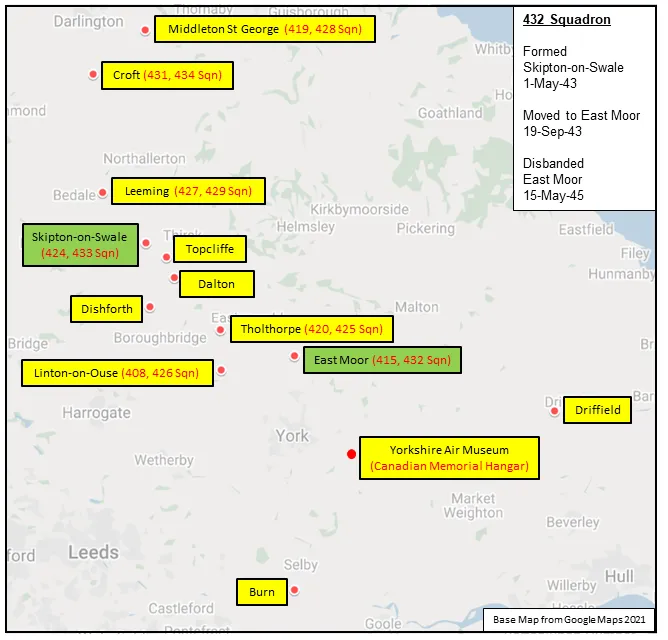
432 Squadron History Summary 1943-45
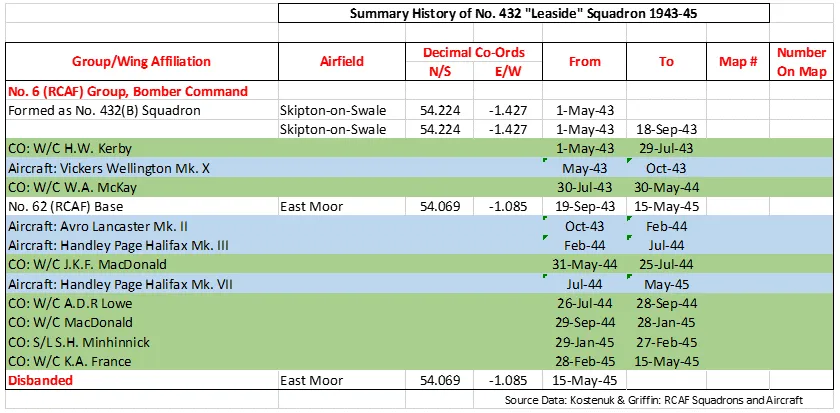
History of the Squadron Post-WWII (Aircraft: Canuck)
The squadron was re-formed at Bagotville, Quebec as an All-Weather Fighter unit on 1 October 1954. The squadron flew Avro CF-100 Canuck aircraft on North American Air Defence until it was disbanded on 15 October 1961.
 Lachine, Quebec
Lachine, Quebec Canadian Virtual War Memorial
Canadian Virtual War Memorial Daily Operations 6bombergroup.ca
Daily Operations 6bombergroup.ca

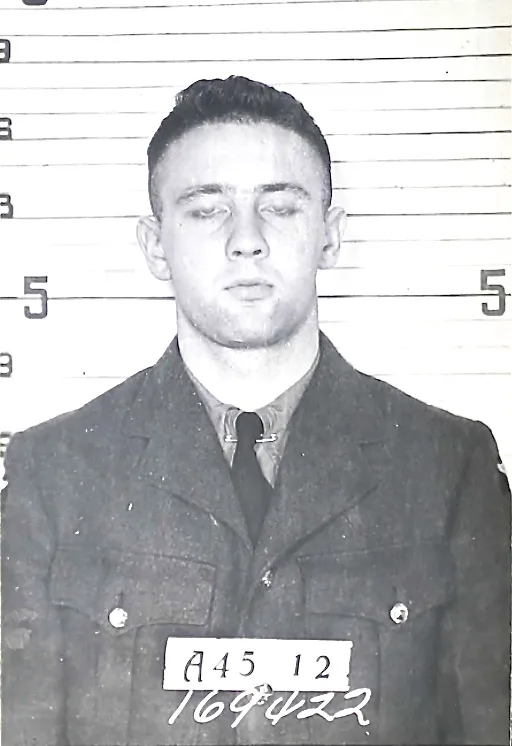


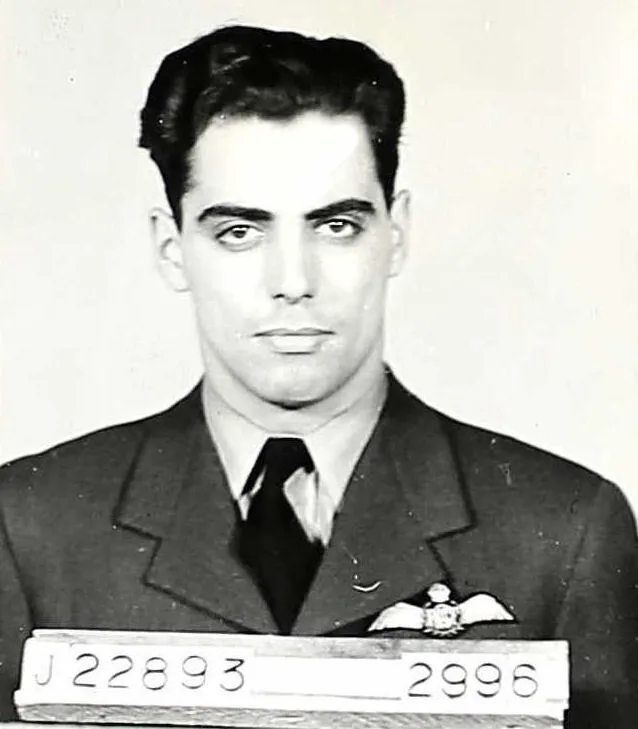
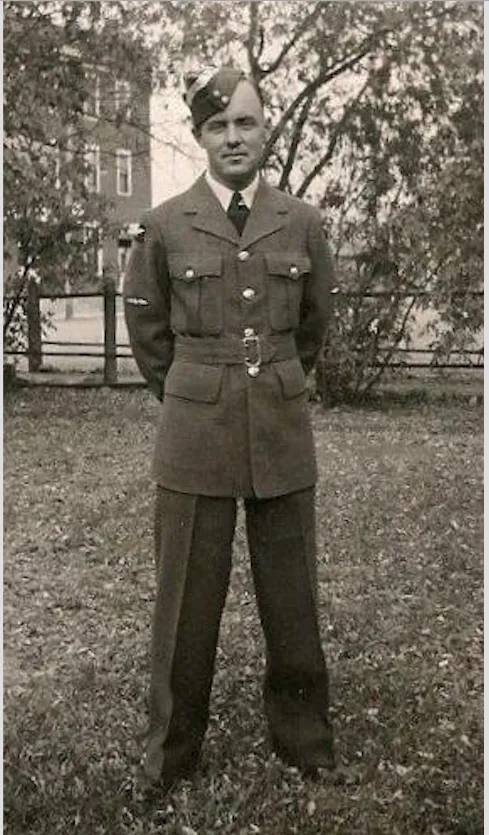
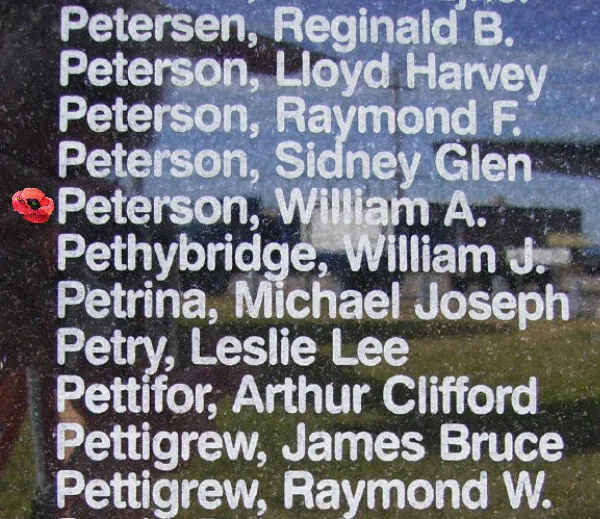
 Lancaster Bomber
Lancaster Bomber Wikipedia
Wikipedia